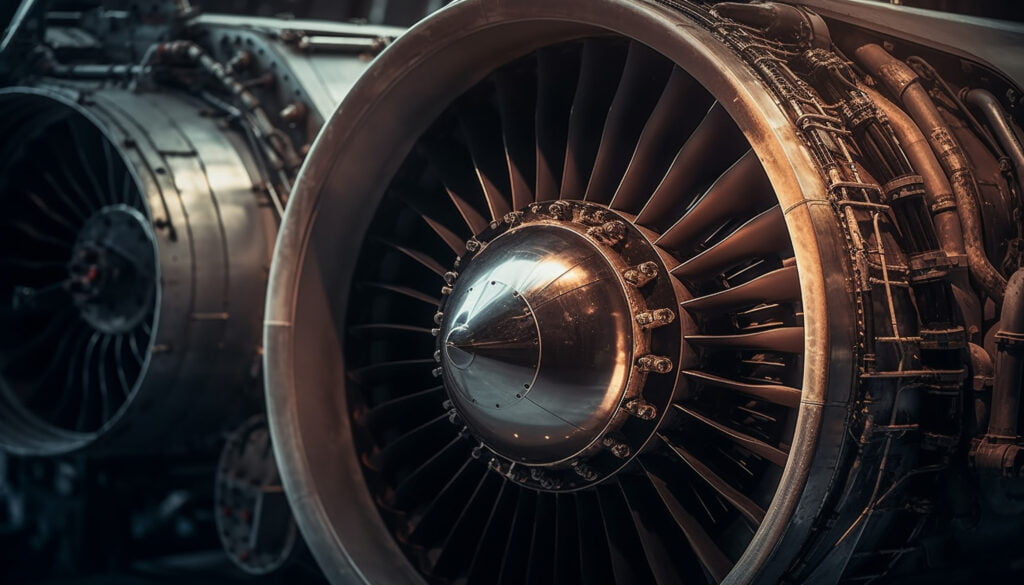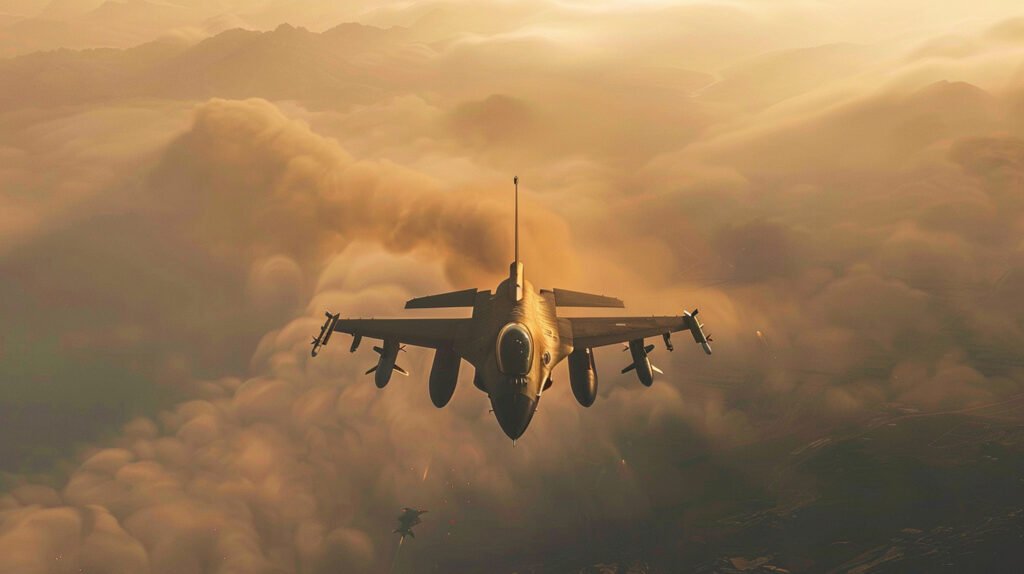The SR-72’s Mach 6 speed isn’t just for show; its real world application makes flying six times the speed of sound an invaluable advantage in gathering intelligence or striking targets across the world. But to achieve such speeds requires exceptional engineering expertise in both aerodynamics and propulsion systems – especially as heat and friction become significant factors at hypersonic velocities.
Table of Contents
Turbojet Meets Scramjet: How the SR-72 Stays at the Forefront
The SR-72’s propulsion system is its main strength. Comprised of both turbojet and scramjet engines, this aircraft can transition smoothly between traditional jet flight at lower speeds before switching over into hypersonic velocity mode for hypersonic travel. This versatile engine offers multiple phases of flight capability suitable for intelligence gathering as well as strike missions – giving this aircraft unparalleled versatility. This unique combination could alter modern warfare forever!

Rumors and reports out of Lockheed Martin’s Skunk Works suggest that the sr-72 project may be closer to becoming reality than many realize, with significant technological milestones already reached and early prototype tests likely underway behind closed doors – all this within 2030! Although its budget overruns have made headlines, its strategic value makes the sr-72 a top priority for future U.S. defense projects.
Why Mach 6 Matters: Engineering Behind the Speed
Mach 6 represents more than just an impressive speed–it represents a transformation in how quickly we can gather intelligence, respond to threats, and strike targets. At Mach 6, an SR-72 aircraft could travel over 4,600 miles per hour at this speed – covering large swaths of earth in much less time compared to today. A trip from New York to Los Angeles would take less than 30 minutes!
Maintaining this level of speed requires tremendous skill. At hypersonic speeds, friction-generated heat generates enough to melt traditional materials if they were exposed to prolonged thermal stress. Therefore, engineers have designed special heat-resistant materials capable of withstanding extreme thermal conditions in order to allow the SR-72 aircraft to safely fly at Mach 6 without becoming disintegrating due to extreme temperatures.

Beyond managing heat, the SR-72’s aerodynamics have been carefully tuned to reduce drag. Its futuristic look isn’t simply aesthetic: its design helps achieve the ideal balance between speed and control – something critical when flying at hypersonic speeds! Furthermore, aerodynamics help ensure stability when transitioning between subsonic, supersonic, and hypersonic flight(s).
Mach 6 matters in an environment in which rapid intelligence gathering is key to turning the tide of conflict, making the SR-72 an asset with global reach that can respond swiftly to crises or provide reconnaissance services in previously inaccessible regions within minutes. Its speed advantage stands out among all others flying aircraft. This speed advantage distinguishes the SR-72 from any other aircraft in the sky.
Turbojet Meets Scramjet: Power Behind the SR-72’s Speed
The SR-72 is capable of reaching hypersonic speeds thanks to its revolutionary combined-cycle propulsion system. This system unites two distinct engines–turbojet and scramjet–that each operate efficiently at different speed ranges; by integrating them efficiently across a broad spectrum of speeds from takeoff through hypersonic flight, its efficiency allows it to navigate effortlessly across an extensive spectrum of speeds ranging from takeoff to hypersonic flight.

At lower speeds, the SR-72 uses a turbojet engine similar to those found in conventional aircraft. Turbojets are reliable and efficient when operating at lower altitude and speed levels – they make for ideal takeoff and subsonic cruising engines, providing thrust for initial takeoff as well as gradual acceleration toward supersonic speeds.
As the SR-72 accelerates, its engine transforms to a scramjet that is specifically designed to operate efficiently at hypersonic speeds. A scramjet (supersonic combustion ramjet) works by compressing air at extremely high speeds before mixing it with fuel; rather than relying on moving parts like traditional engines do, air is forced through into its combustion chamber where supersonic combustion takes place and ultimately propels it to speeds of Mach 6 or beyond. This process allows the SR-72 to reach Mach 6+ speeds as soon as it accelerates.
Engineers have perfected this transition so that this extra-ordinary Aircraft can switch engines midflight without losing control or speed – giving this aircraft an advantage over traditional designs that only rely on one propulsion system.
Why it Matters
The SR-72 boasts an unparalleled combination of turbojet and scramjet engines that gives it an enormous strategic advantage, being capable of traveling long distances at subsonic speeds before quickly increasing to hypersonic speeds for missions requiring extreme speed and precision. It’s versatility makes this extra-ordinary Aircraft an invaluable asset both in intelligence gathering missions as well as military strike operations; covering vast distances quickly.
Dream to Skies: The SR-72’s Journey from Concept to Reality
Once considered an unattainable fantasy in aerospace circles, Lockheed Martin’s Skunk Works team has quietly progressed with prototype design work for this aircraft formerly thought to be unrealisable. Now being tested in real flight simulation environments across North America – not only has the dream become real but hypersonic flight will soon be here too!
Prototypes Already in the Air
Industry insiders confirm that early prototypes, known as Flight Research Vehicles (FRVs), for Lockheed Martin’s revolutionary aircraft have already begun taking flight in advanced stages of development. Smaller versions have already conducted test flights to help unlock its propulsion system and aerodynamics as early as 2025; full scale versions could become operational by 2030.
Big Ambitions, Big Costs
The SR-72 program has not been without its challenges – particularly with regards to its budget. Lockheed Martin recently reported significant cost overruns on this project totalling $335 million as of 2024; yet its strategic importance kept moving forward regardless. The U.S. Department of Defense recognizes its immense worth, making this aircraft a priority despite financial hurdles.
Why Speed Is a Strategic Advantage
In today’s geopolitical environment, speed has become more than an engineering feat: it is an indispensable asset. Reaching Mach 6 will enable the SR-72 to conduct reconnaissance and precision strikes faster than any aircraft in history – giving the U.S. the ability to respond more rapidly in future conflicts while giving its allies an advantage against heavy defenders of airspaces. Hypersonic speeds also make the aircraft harder for adversaries to detect or intercept, providing it with an advantage in heavily protected airspaces.
A Peek into the Future
The SR-72 marks a critical turning point in aviation history. Boasting unrivaled speed, precision, and flexibility it could become the backbone of U.S. military strategy in years to come. As Lockheed Martin continues pushing engineering and aerospace technology limits forward with this aircraft it promises to redefine what’s possible in the sky.
Conclusion
The SR-72, commonly referred to as the “Son of Blackbird,” stands as an icon of future aerospace engineering and military capability. With its hypersonic speed, advanced propulsion system, and ability to outwit modern defense systems, this aircraft could revolutionize battlefield operations.
Lockheed Martin has made remarkable progress towards operational readiness despite its budget overruns and technical hurdles, with its SR-72 rocket plane being seen as an unparalleled breakthrough in aviation history. Not just a successor to the SR-71, the SR-72 marks an entirely new frontier that will revolutionise global military strategies; soon its prototype will take flight, marking the beginning of hypersonic flight as we know it today.
FAQ’s :
Will the SR-72 be operated with or without personnel onboard?
The SR-72 UAV was designed as an unmanned aerial vehicle (UAV), making its hypersonic speeds ideal for remote operations without risk to pilots while carrying out dangerous missions such as deep reconnaissance or strikes in heavily protected areas.
What materials can withstand the extreme temperatures at Mach 6?
At Mach 6, atmospheric friction generates extreme heat, necessitating advanced materials in order to mitigate it – including heat-resistant alloys, carbon composites and ceramic materials – in order to manage thermal stresses caused by hypersonic speeds.
How will the SR-72 differ from traditional satellite intelligence gathering methods?
Contrary to satellites, which generally follow predictable orbits and can be tracked, the SR-72 may appear unexpectedly and cover regions not under satellite surveillance. With its fast speed allowing rapid intelligence gathering in dynamic environments giving it a tactical advantage for real time data acquisition.
What role does the SR-72 play in counterhypersonic warfare?
The SR-72 serves not only as an offensive weapon but also plays an integral role in countering adversary hypersonic technologies. With its rapid surveillance and strike capability, it can quickly neutralize enemy hypersonic weapons before they reach their intended targets.
How does the SR-72 compare with current hypersonic missiles?
Though hypersonic missiles are designed for single use and high speed strikes, the SR-72 can be reused multiple times, making it an invaluable strategic asset. By flying multiple missions at the same time it becomes an effective tool for reconnaissance as well as precision strikes – becoming an invaluable strategic asset beyond one-time use weapons.
What environmental concerns does the SR-72 pose?
Flying at hypersonic speeds can generate sonic booms and high-altitude emissions, raising environmental concerns. Engineers likely take steps to minimize any negative effects during flight operations on populated areas or the upper atmosphere.